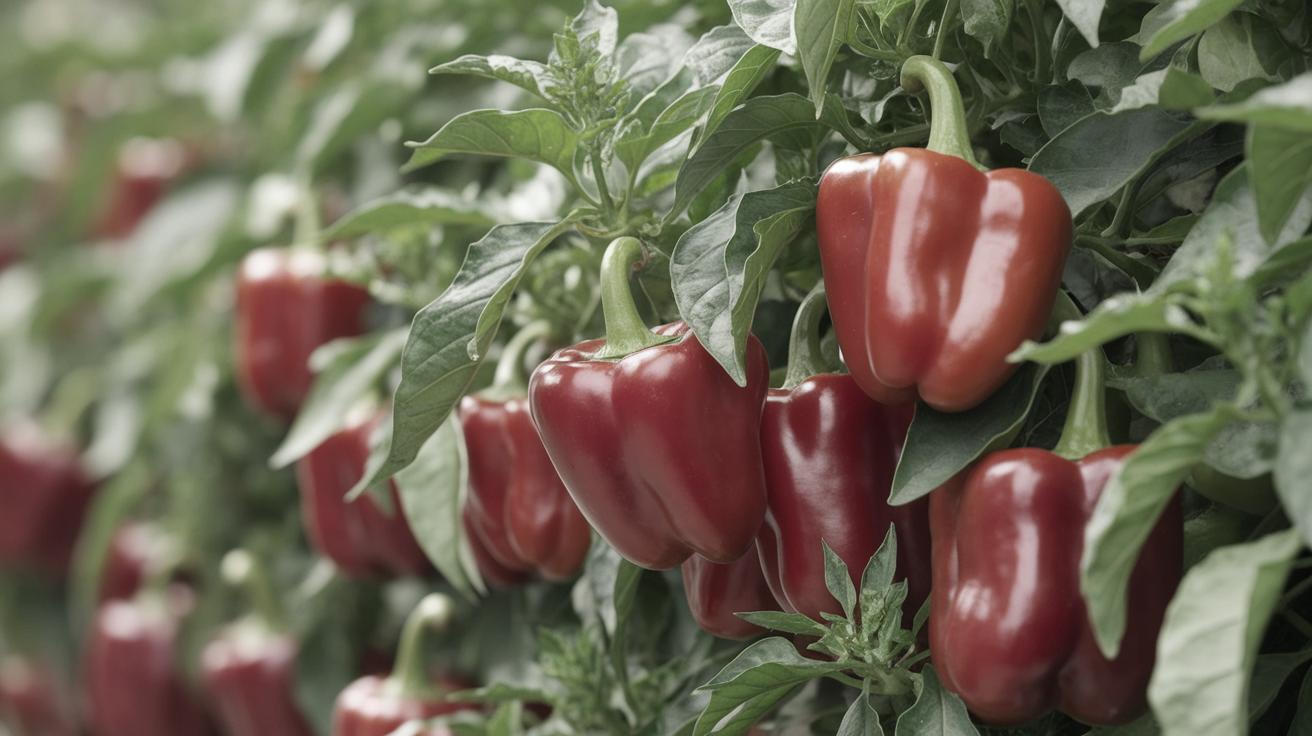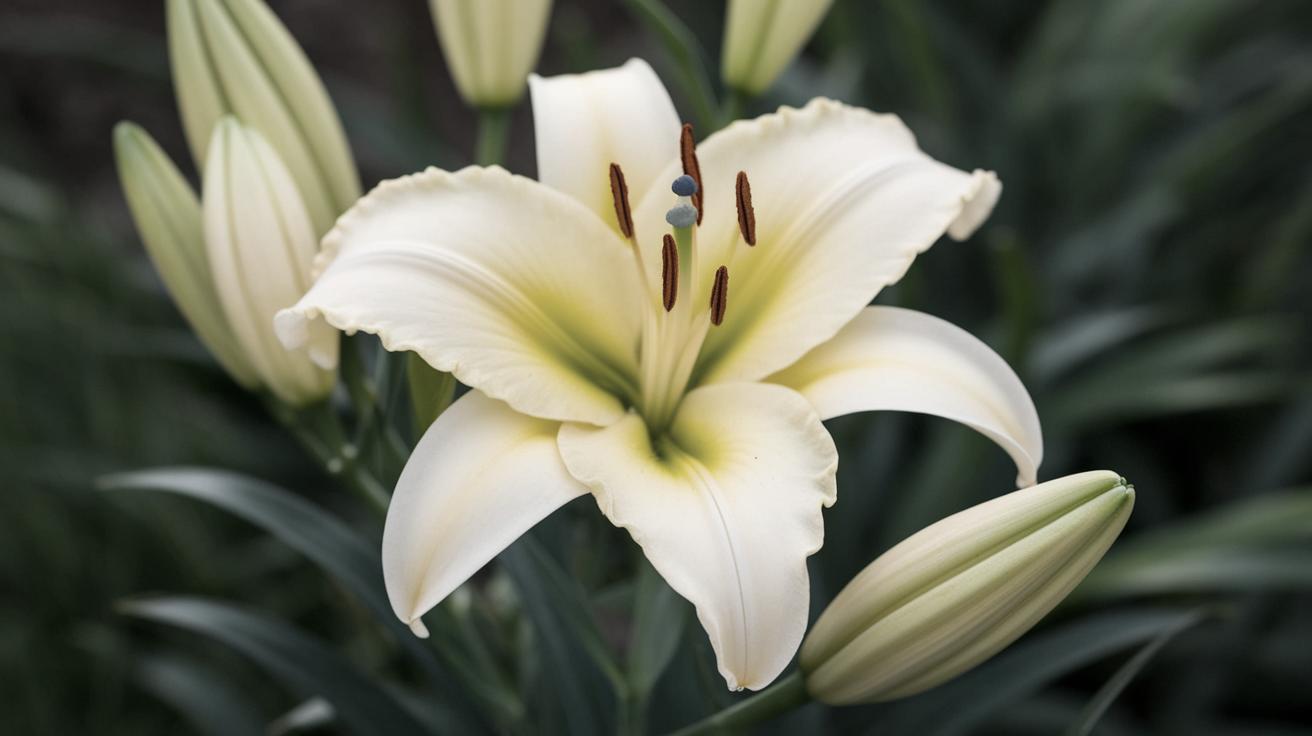How to Grow Red Bell Peppers
Growing red bell peppers can be a rewarding endeavor, offering not only a vibrant addition to your garden but also a delicious ingredient for your culinary creations. This guide will walk you through the essentials of cultivating red bell peppers, covering everything from planting and soil care to troubleshooting common issues. We will explore the mysteries of why plants might lose blooms, how to cultivate peppers in containers, and even the intricacies of growing hot and sweet peppers side by side. For the eager gardener, tips on fertilizing, watering, and harvesting will ensure a bountiful yield. Finally, handling those hot peppers and understanding the Scoville scale will round out your pepper-growing knowledge.
Quick Guide to Growing Peppers
Growing red bell peppers starts with understanding their basic needs. These plants thrive in warm, well-drained soil with plenty of sunlight. Ideally, peppers should be started indoors about 8 to 10 weeks before the last frost date in your area and then transplanted outdoors.
To give your peppers the best start, use a high-quality seed starting mix, and keep them in a sunny, warm location. Once they are ready to transplant, choose a sunny spot in your garden and space them adequately to ensure good airflow. With the right attention and care, your red bell peppers will flourish and provide a beautiful addition to your garden.
Soil, Planting, and Care
How deep do I plant pepper plants in the ground?
For planting pepper plants, dig a hole that is equal to the depth of the plant’s root ball, ideally 18 inches apart within rows and 24 inches between rows. This depth ensures that the root system is well-supported and able to access nutrients from the soil effectively.
Pepper plants benefit from being planted in soil amended with organic matter, such as compost, which enhances soil fertility and drainage. After planting, mulch around the base to conserve moisture and suppress weeds, providing an ideal environment for growth.
How often do I fertilize my bell pepper plants?
Fertilizing your bell peppers is crucial for maximizing their growth potential. Start with a balanced fertilizer when planting, and continue to fertilize every 4-6 weeks during the growing season. Look for a fertilizer with an even NPK ratio or one slightly higher in potassium to support flowering and fruiting.
A side dressing of compost or manure during mid-season can provide a nice boost. Always water well before and after applying fertilizer to prevent root burn and to help nutrients penetrate the soil effectively.
How often should I water my bell pepper plants?
Bell peppers require consistent moisture for healthy growth. Aim to provide about 1-2 inches of water per week, depending on your climate and soil type, but avoid overwatering. It’s crucial to maintain a balance where the soil remains moist but not waterlogged.
Installing a drip irrigation system can help manage watering efficiently, ensuring peppers receive the right amount of moisture while preventing issues like rot and mold, which can arise from waterlogged conditions.
Troubleshooting
Why is my plant losing blooms?
Bloom loss in pepper plants can usually be attributed to stress factors such as temperature fluctuations, particularly if exposed to temperatures below 60°F or above 90°F. Ensuring a stable environment with minimal stress can aid flower retention.
Overwatering and nutrient imbalances may also lead to diustress. Monitoring these factors and adjusting care routines accordingly can prevent further bloom loss and encourage healthy fruit set.
Are tall, leggy pepper plants okay? Should I stake them to prevent breakage from the wind?
Tall, leggy pepper plants may signify insufficient light exposure. To combat this, ensure your plants receive at least 6-8 hours of sunlight each day. If they become too tall or unstable, consider staking to prevent damage from wind or heavy fruit production.
Staking can also improve air circulation around the plant, reducing the likelihood of diseases while offering more support to fruit-laden branches.
Is it okay to plant hot peppers next to sweet peppers?
Planting hot and sweet peppers next to each other is perfectly fine, as cross-pollination will not affect the flavor of the fruit during the current season. However, if you’re planning to save seeds for next year, there is a chance they could produce hotter peppers.
To avoid any cross-pollination issues, consider separating them in the garden or planting another crop between them. This precaution ensures that sweet peppers remain true to type.
Harvest and Storage
How do I know when to pick my peppers?
Red bell peppers are best harvested when they have reached full size and have a deep, vibrant red color. Gently twist or cut the pepper from the plant to avoid damage to the stems and other developing fruits.
Regular harvesting encourages the plant to continue producing. After harvesting, store peppers in a cool, dark place or refrigerate them to extend their freshness and enjoy their rich flavor in your favorite dishes.
Handling Hot Peppers
Handling hot peppers requires caution due to their capsaicin content, which can irritate skin and eyes. Always wear gloves when handling them, and avoid touching your face. Capsaicin is responsible for the heat in peppers and is measured in Scoville Heat Units (SHUs).
If you’ve been exposed to capsaicin, you can alleviate the burning sensation by rinsing the affected area with dairy products like milk or yogurt, which help neutralize the compound.
FAQs
What makes a chili pepper hot?
The heat in chili peppers comes from capsaicin, a compound that binds with pain receptors in the tongue and triggers a burning sensation. The level of heat is measured in Scoville Heat Units (SHUs), with higher numbers indicating hotter peppers.
Varieties like the Carolina Reaper or Ghost Pepper are famously known for their extreme heat, while bell peppers rank at zero SHUs due to the absence of capsaicin.
Which peppers are best to stuff?
Peppers with thick, sturdy walls are best for stuffing, with bell peppers being the most common choice. Their size and shape are ideal for holding fillings, whether it’s a classic mixture of rice and meat or a vegetarian blend of grains and vegetables.
Poblano peppers are also an excellent choice, offering a mild chili flavor that complements a variety of stuffing recipes. With their slightly spicier profile, they’re perfect for those who prefer a bit of heat in their stuffed peppers.
I just purchased a young bell pepper plant and it has flowers on it. Should I pull the flowers off in order to get larger bell peppers?
It’s advisable to remove early flowers from very young plants to direct energy towards establishing a strong root system and robust foliage. This step, while sacrificing initial fruit, can lead to healthier plants capable of producing larger peppers later in the season.
As the plant matures, you can allow it to flower and set fruit, ensuring each fruit has the optimal conditions for growth without overwhelming the plant.
Can I plant peppers in containers?
Yes, peppers can thrive in containers provided they have ample space for root development. Choose a container that’s at least 12 inches in diameter and that has good drainage to prevent waterlogging.
Use a quality potting mix, and place containers in areas that receive plenty of sunlight. Regular watering and fertilization will ensure that container-grown peppers are just as fruitful as those grown in-ground.
Lessons Learned
| Aspect | Details |
|---|---|
| Planting | Use well-drained soil, plant after frost, space properly. |
| Fertilizing | Fertilize every 4-6 weeks, water well, use balanced NPK. |
| Watering | 1-2 inches per week, avoid overwatering, drip irrigation beneficial. |
| Troubleshooting | Manage temperature extremes, stake leggy plants, separate hot/sweet varieties. |
| Harvesting | Pick when red and full size, store in a cool place or refrigerate. |
| Handling | Use gloves for handling hot peppers, neutralize capsaicin with dairy. |


